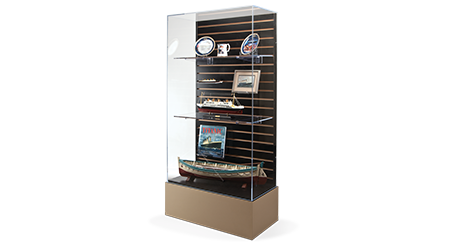Exhibit Case Buyer's Guide
Understand your options and find the perfect case for your exhibit.
Whether you’re designing a custom case from the ground up or choosing from our extensive selection of exclusive exhibit case designs, you have many options. Some are stylistic, while others are functional or related to conservation.
Important Considerations Before Purchasing an Exhibit Case
How fragile and/or valuable are the objects you are displaying?
Several features can help protect objects on display, including UV filtering, deck and base materials, seals/gaskets, silica gel compartments and security features.
Is this exhibit case for a permanent, temporary, rotating or traveling exhibition?
Consider how long your objects will be on display to help determine the level of protection and case budget. For traveling exhibits, table leg cases with detachable legs can make shipping easier.
Are the objects you’re displaying on loan?
If so, check the terms of your loan agreement to determine specific conservation and security requirements.
What style and size of exhibit case would best accommodate your objects?
To determine the best style of exhibit case, consider the size and number of objects you want to display and how you want to display them.
Consider the viewing experience and display height. Some cases may have display areas above or below a viewing angle accessible to all patrons.
Also, consider where you’ll put the case. Will it be up against a wall or set in the middle of the space with 360° viewing?
What looks/finishes would work best in your space?
Exhibit case finishes are available to match any décor from traditional to contemporary. Wood, raised or recessed panels, and molding tend to have a more traditional architectural feel, while clean lines and neutral colors trend more contemporary.
If you’re looking for the most color options, painted bases offer thousands of choices, including custom colors. Laminate bases are available in hundreds of colors/patterns and offer the added benefits of being extra durable and easy to clean.


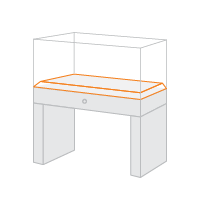
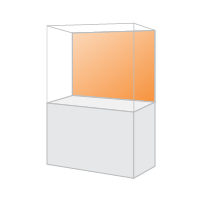
Vitrine
Base
Deck
Back
Pedestal Cases
Pedestal cases have a square or rectangular base that’s finished on four sides. The pedestal gives the case a substantial, grounded feel. Typically made of formaldehyde-free MDF or wood, pedestal cases come in various popular base finishes, including painted/paintable, laminate and wood.![]()
Ideal for single objects or groups of small objects.
Table & Panel Leg Cases
Table and panel leg cases are popular for displaying flat objects and are available with slanted decks to enhance visibility. The open base has a lighter feel than a pedestal base. Table legs offer a minimalist style that disappears into the background, while panel legs provide more presence.![]()
Ideal for documents, books and groups of smaller objects.
Tower & Freestanding Cases
Tower and freestanding cases include mannequin cases, double-sided cases and other tall cases designed to be viewed from all sides. These cases have a small base or plinth and provide full-height viewing. They may be completely open inside, have shelving or a center display back (double-sided cases).![]()
Ideal for taller/larger objects or groups of objects. Perfect for items that require 360° viewing.
Floor-Standing Wall Cases
Floor-standing wall cases are designed to be pushed up against a wall, so they need less floor space than tower/freestanding cases. They may be open to display taller objects or have shelves. Options with pinnable backs are also great for hanging textiles.![]()
Ideal for situations where it’s preferable to use wall space and minimize floor space used.
Wall-Mount Cases
Wall-mount cases are designed to be hung on a wall. Some offer a display deck to set objects on, while others require objects to be mounted to the back of the case. Most wall cases are surface mounted, but recessed cases are also available. ![]()
Ideal for eye-catching displays of small or flat objects. Cases can be grouped to display related objects together.
Tabletop Cases
Tabletop cases let you take advantage of existing table and counter space. They're easy to change out and rearrange for temporary exhibits. They’re generally less expensive than cases with a base but also come in a smaller size range. ![]()
Ideal for temporary displays and making the most of existing table/counter space.
Specialty Cases
Specialty cases are designed to display specific objects, such as flags, jerseys, balls and more. They may include hangers or mounts specifically for displaying the intended object. ![]()
Perfectly sized for specific objects.
Trophy Cases
Trophy cases are most often freestanding wall cases. They’re usually glass with sliding or hinged door access and adjustable shelves to display an array of objects. These cases typically aren’t made with archival materials or environmental control features. They are intended for basic display only. ![]()
Ideal for displaying collections of related objects that are not fragile or of significant value.
Custom Designed Cases
Custom cases are designed specifically for your needs. They could be anything from a built-in case that becomes part of the architecture of your gallery to cases designed for specific purposes. Gaylord Archival has designed cases for all sorts of unique situations, from cases that fit around architectural columns to cases for a huge, fossilized dinosaur. ![]()
Ideal for particular display and installation requirements.
Acrylic vs. Glass
In the United States, archival-quality cases with acrylic vitrines are more popular, more widely available, and offer a broader range of choices. Glass cases in the US tend to be trophy-type cases that are not archival-quality. High-end glass cases are often manufactured in Europe, which means accounting for long lead times and logistics. However, there are several other considerations when choosing acrylic versus glass.
Advantages of Acrylic
- Acrylic material and fabrication costs less, making it more affordable
- Light weight makes accessing contents easier, which is ideal for rotating exhibits
- More case fabricators work with acrylic and conservation-grade exhibit cases, resulting in more options and faster turnaround
- Compared to glass cases, acrylic is easier to replace
Advantages of Glass
- Excellent for permanent exhibits due to longevity and durability
- Glass cases fit a specific aesthetic choice
- Laminated glass is more secure, and loaned objects may contractually require glass cases
- Glass's tensile strength makes it ideal for large cases
To learn more about glass versus acrylic vitrines, visit these additional resources:
- Comparing Acrylic & Glass Showcases
- All About Glass Showcases
- All About Acrylic Vitrines
Archival Materials

When a case is made from archival materials, it means everything in the display environment has undergone industry testing and is considered safe and will not off-gas. These materials include the vitrine, the deck, any deck padding or wrapping, and seal/gasket materials when applicable. It also includes the base, typically made from formaldehyde-free MDF or powder-coated metal.
Wood is not an archival material and should not be in the exhibit case's display area; however, if a wood base is wholly isolated from the display area by an archival deck, the case may still be considered archival quality. Wood must be separated from the exhibit space via High-Density Plastic Laminate (HDPL), vapor barrier laminate, or foil.
UV Filtering

UV-filtering acrylic or laminated glass filters out up to 99% of UV rays (97-99% depending on specific material specs) to help minimize light damage to objects on display. These materials will not eliminate all UV exposure and, if light damage is of particular concern, should be combined with other measures, such as window films/coverings, fluorescent light covers, and rotating objects off display.
Silica Gel Compartment

A silica gel compartment is built into the case to hold silica gel for humidity control. Cases with silica gel compartments should also have seals/gaskets to minimize air exchange and maintain humidity.
Silica gel compartments can be accessible under the case's deck or via an external door or drawer. External access makes it more convenient to change the silica gel when needed without disturbing the display area.
You will need to consider the air exchange rate of the case and the size of the case to calculate the amount of silica gel necessary to maintain the humidity level. Use our Silica Gel Calculator to figure out how much you'll need.
It would be best to use a temperature and humidity data logger to check levels without access to the display space.
Gaskets
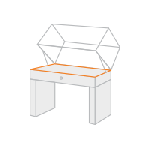
Silicone gaskets reduce gaps at junction points, such as where the base meets the vitrine, to form a sealed environment that minimizes air exchange. When combined with silica gel, these gaskets help control dust and create a microclimate in the display area.
Access

Depending on how often you need to access a case for changing silica gel, dusting or rotating exhibits, consider the type of access you’ll need and available staff. While some cases offer hinged doors or gas lifters, others require the vitrine to be lifted by multiple people over the objects without torquing the vitrine.
Security

The most common security feature is the use of security screws. Security screws have head patterns that require a specialized screwdriver to remove and are used to attach the vitrine to the base or frame at multiple points. Keyed locks are also available on some cases.
Laminated glass is also a security feature because the lamination keeps it intact even if broken.
Removable Deck

Removable decking allows the deck to be removed and updated with linen or Ethafoam® to change the look of the display space. It may also provide a space for silica gel underneath; however, someone will need to remove the vitrine, objects on display and the deck to access the silica gel compartment. This works best for stable items, temporary or rotating exhibits, or cases with smaller display space.
Make it Mobile

If you need to move exhibit cases out of the way for events and receptions (lest your cases end up tables for cocktails), look for cases with optional hidden casters or pallet jack access. 
Look for the Make it Mobile logo at Gaylord.com.
Lighting

Different lighting options are available for exhibit cases when overhead lighting is insufficient or you want to highlight specific objects. Fiber optic lighting is the museum standard, but it can be expensive and challenging to integrate into casework. LED lighting has become more acceptable and is available in different styles, such as spotlights, light bars, light hoods, and overhead lighting. Avoid using Halogen lighting as it creates heat, which can damage items on display.
Exposure to any light can cause irreversible damage over time, so light exposure should be limited for fragile and valuable objects.
Also, remember that lighting requires power, so you'll need to run a cord from the case to the nearest outlet. Cords can pose a tripping risk, so this may not be ideal unless the case is placed against a wall and near an outlet.
Storage Options
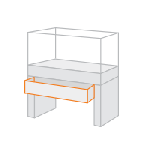
Some exhibit cases offer storage as a cabinet base or drawers. Drawer storage may or may not be accessible to patrons. Patron-accessible drawers provide visible storage and are covered in acrylic for protection/security.
Shelving
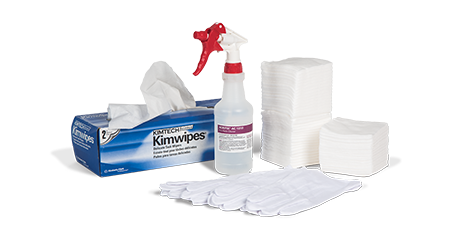
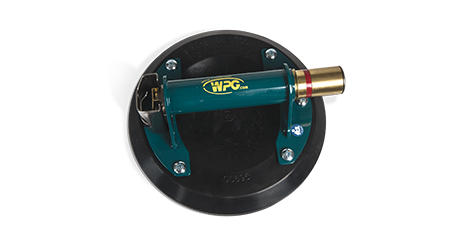
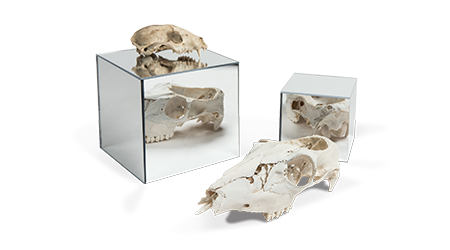
Acrylic Cleaning Supplies
Choosing cleaners designed for use with acrylic is essential because ammonia and alcohol-based glass cleaners can cause yellowing, hazing, microfractures, cracks and scratches. Learn more about the Care & Handling of Acrylic.
Display Accessories
Our wide range of display accessories, including stands, risers, cradles and mounts, provide support for your objects on display in addition to creating visual interest.
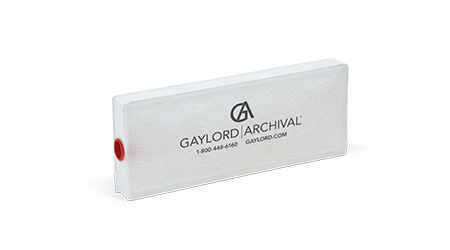
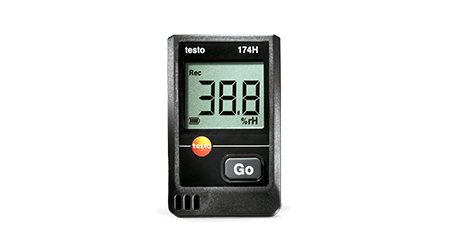
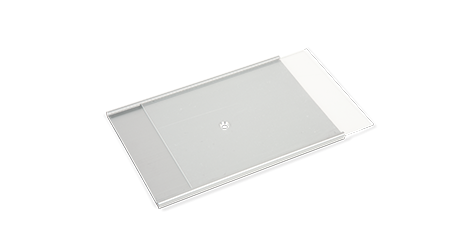
Silica Gel
Available as loose beads, sheets, packets and cartridges, silica gel is used to maintain a specific relative humidity level inside an exhibit case. Use our Silica Gel Calculator to find out how much you’ll need.
Environmental Monitors & Data Loggers
Monitor environmental conditions within your exhibit case with data loggers that provide information on temperature, humidity and even light exposure.
Exhibit Labels
Communicate important exhibit information with our variety of label holders. Need help writing moving exhibit copy? Check out our resource on Creating ADA-Compliant Exhibit Labels.
Helpful Hints
- Almost all exhibit cases are made to order, even if not customized. To ensure on-time delivery, be sure to allow a minimum of three months' lead time (longer for custom cases). You’ll also want to double-check your order before placing it, as most exhibit cases are non-refundable.
- Exhibit cases are big and heavy and can be somewhat fragile. Many are shipped in large wooden crates to ensure safe delivery, which adds to their size and weight. Plan your delivery route and installation location carefully to ensure adequate clearance at all points.
- Paintable pedestal cases are an easy and cost-effective way to refresh a rotating exhibit. Paint them to add to the visual appeal and enhance the narrative, or paint them to blend in with the surroundings so they virtually disappear.
Other Resources
- Designing a Conservation-Grade Case from AIC Wiki
- Exhibit Planning, Design & Fabrication Specifications from National Parks Service (NPS)
- Degree of Case Seal: Air Exchange Rates from AIC Wiki

Exhibit Planning Checklist
Download our user-friendly and customizable Exhibit Planning Checklist to organize and execute your next exhibition effortlessly. No matter your knowledge level, this comprehensive checklist will be your go-to resource to ensure a successful and stress-free exhibition. Download it now and take the first step towards a successful and memorable exhibition!


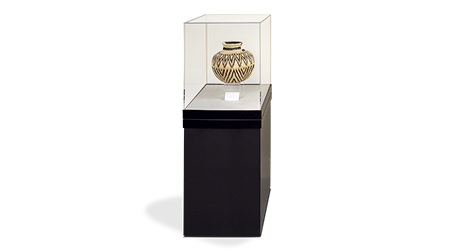

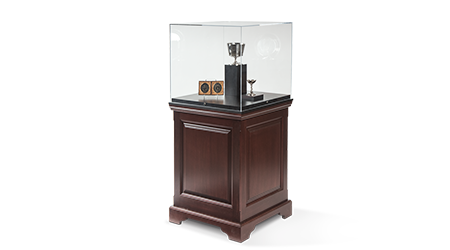


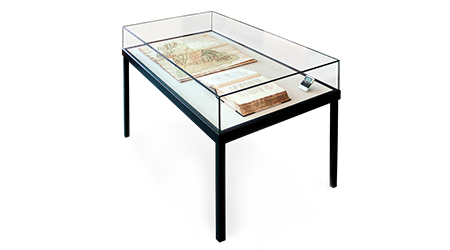
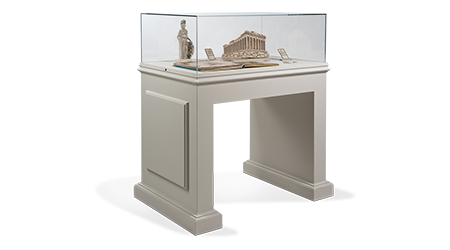
.png)
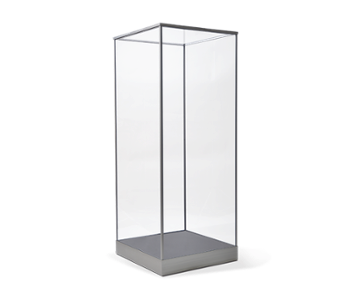
.png)





